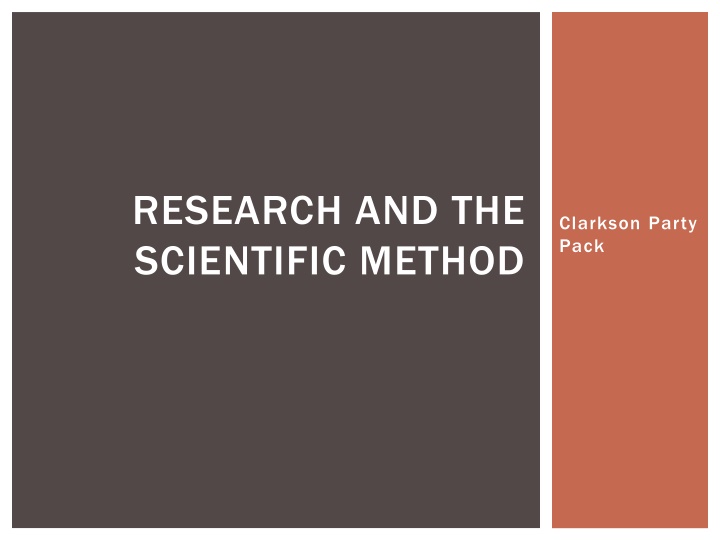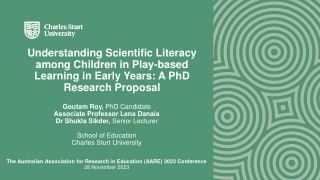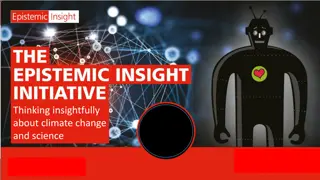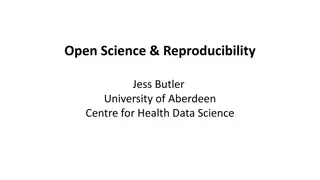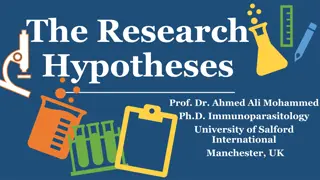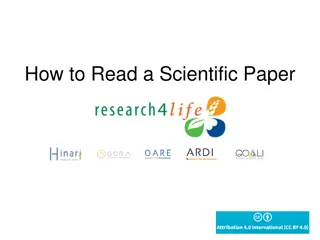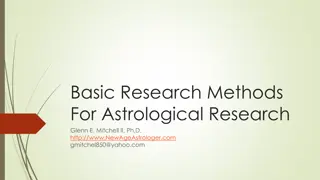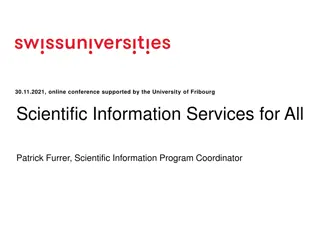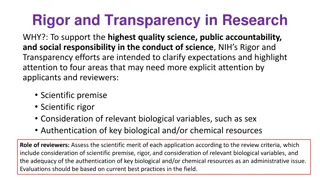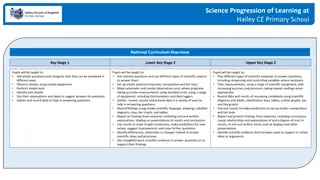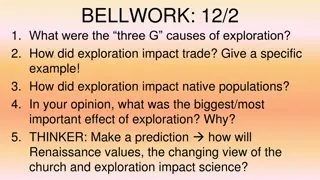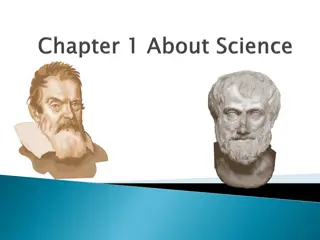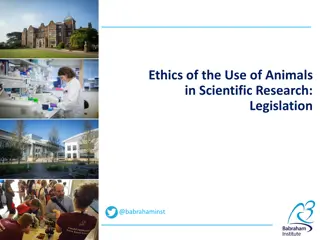Scientific Research and Methods
Scientific research encompasses pure and applied approaches to understanding the world around us. Explore examples of applied scientific research questions and learn how to formulate your own research questions using the scientific method.
Download Presentation

Please find below an Image/Link to download the presentation.
The content on the website is provided AS IS for your information and personal use only. It may not be sold, licensed, or shared on other websites without obtaining consent from the author.If you encounter any issues during the download, it is possible that the publisher has removed the file from their server.
You are allowed to download the files provided on this website for personal or commercial use, subject to the condition that they are used lawfully. All files are the property of their respective owners.
The content on the website is provided AS IS for your information and personal use only. It may not be sold, licensed, or shared on other websites without obtaining consent from the author.
E N D
Presentation Transcript
RESEARCH AND THE SCIENTIFIC METHOD Clarkson Party Pack
WHAT IS SCIENTIFIC RESEARCH? It comes in TWO flavors: Pure scientific research Pure scientific research is about trying to understand and explain the world around us Applied scientific research Applied scientific research looks for answer to specific questions This is the type of research we are mainly concerned with Explore this site to learn more!
APPLIED SCIENTIFIC RESEARCH Some examples of applied questions: What is the fastest route from my house to school? What breakfast foods give you the most energy? What is the most popular lunch option in the cafeteria? What type of joke makes people laugh the most? What time of day are people most awake? How can we predict which baseball team will win the World Series? When is the best time to go to the grocery store to avoid lines?
YOUR OWN QUESTIONS Go through the brainstorming activity to come up with your own question (OR QUESTIONS S): List some of your favorite things to do What are some current events, news items, or personal opinions that you are passionate about? What are some things you are curious about? NOW think about how to turn one (or more) of these items into a RESEARCH question where NEW knowledge is uncovered!
SCIENTIFIC METHOD NOW you have a testable question about some real world phenomenon! We need to be sure we can apply the scientific method scientific method to it Let s review what that is
STEPS IN RESEARCH Form a QUESTION QUESTION Collect DATA DATA Collect relevant BACKGROUND BACKGROUND information Interpret and ANALYZE your results ANALYZE Make a HYPOTHESIS HYPOTHESIS Make CONCLUSIONS CONCLUSIONS Design/conduct an EXPERIMENT EXPERIMENT to help you test the hypothesis Repeat and revise the hypothesis/experiment as needed!
FINDING BACKGROUND INFORMATION With a question in mind, start trying to learn as much as you can about the general topic you are concerned with! Has your question already been answered? Does previously conducted research exist? Do you want to repeat an experiment? Do you want to change/improve an experiment? What facts are already known? What theories already exist? Why would someone care about the answer to your question? What impact could finding the answer have? Can it help others in some way? Use scientific articles and verified sources Use scientific articles and verified sources (Google Scholar, encyclopedias, textbooks) to help you find these answers
HYPOTHESES This might be a question, a statement, or an If/Then claim Examples: Is over-fishing causing a decline in the stocks of Cod in the North Atlantic? Over-fishing affects the stocks of cod. If over-fishing is causing a decline in the numbers of Cod, then reducing the amount of trawlers will increase cod stocks.
EXPERIMENTATION An experiment should satisfy the following criteria: The sample collected for testing should be obtained randomly There must be a viable control group Do not try to test too many variables at a time One variable existing between each experimental group and the control is recommended Test subjects are randomly assigned to experiment and control groups The experiment must be repeatable (others should get similar results if they attempt it)
DATA AND ANALYSIS Data should consist of information observed during the course of the experiment Numerical (measurements) Heights, weights, speeds, amounts, ratings (1-10) Categorical (responses, descriptors) Yes/No, color, shape, gender You should use some kind of STATISTICS to analyze your data Make graphs/tables/figures showing results Clearly present what you LEARNED
CONCLUSIONS Did you confirm or refute your hypothesis? What errors may have occurred during experimentation? How might the experiment be improved/changed? What related questions might you want to answer next? You MAY wish to answer these questions by conducting additional experiments You will increase the validity of your results You will learn even more information You will be more convincing when presenting your findings to others
PRESENTING YOUR RESULTS Collect all the information you have obtained while carrying out the SCIENTIFIC METHOD Publish/summarize your results in at least one of the following: A paper A talk A poster Be prepared to receive criticism and be asked questions!!! This is one of the most important parts of the scientific process
Did you confirm or refute your hypothesis? What errors may have occurred during experimentation? How might the experiment be improved/changed? What related questions might you want to answer next? You MAY wish to answer these questions by conducting additional experiments You will increase the validity of your results You will learn even more information You will be more convincing when presenting your findings to others
